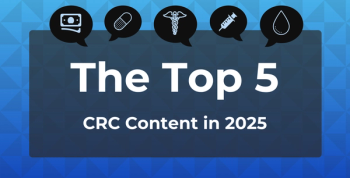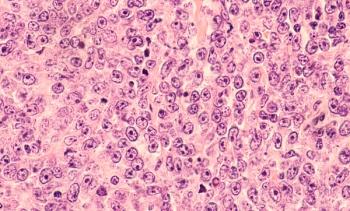
Single-Cell RNA Sequencing May Lend Insights Into Lung Adenocarcinoma Prognosis
The report suggests factors besides molecular profiling can be helpful in patient stratification.
A new report makes the case that single-cell RNA sequencing can help elucidate features of the tumor microenvironment that could potentially be used to guide
“Comprehensive characterization including features of the tumor microenvironment could provide more precise patient stratifications,” they said.
Bischoff and colleagues said factors like immune response modulation, remodeling of the extracellular matrix, and neoangionesis are all associated with the aggressiveness of a particular cancer.
“Current bulk omics analyses do not allow high-resolution characterization of cellular diversity of the tumor microenvironment,” they wrote. “However, comprehensive single-cell profiling of patient tissue is emerging as an essential tool to estimate the clinical relevance of individual cell types in the tumor.”
The investigators set out to identify clinically relevant microenvironmental and cancer features, using the technique of single-cell RNA sequencing. They used 10 human lung adenocarcinoma samples and compared them to 10 normal control tissues.
“Our analyses revealed heterogeneous carcinoma cell transcriptomes reflecting histological grade and oncogenic pathway activities, and two distinct microenvironmental patterns,” they wrote.
The first of the distinct microenvironmental patterns was marked by “normal-like” myofibroblasts, non-inflammatory monocyte-derived macrophages, natural killer (NK) cells, myeloid dendritic cells, and conventional T cells. This pattern was referred to as the N3MC pattern. The second group of tumors had cancer-associated myofibroblasts, pro-inflammatory monocyte-derived macrophages, plasmacytoid dendritic cells, and exhausted CD9+ T cells. This second environment was labeled the CP2E pattern.
Those different microenvironments were linked with different prognoses. Patients with the N3MC pattern generally had a favorable prognosis, while the CP2E pattern was associated with a poor prognosis.
“So far, our findings suggest a prognostic relevance of tumor microenvironmental patterns which could aid in therapeutic decision making,” the investigators wrote.
They added that preclinical findings from other investigators suggest microenvironmental patterns might also be predictive of response to immune checkpoint inhibitors.
“Finally, characterization of the tumor microenvironment on single-cell resolution can provide insight on possible novel therapeutic targets,” they said.
What is not yet clear, they said, is the direction (or directions) of the relationship between cancer cells and the tumor microenvironment. For instance, they said, it may be that the cancer cells themselves shape the microenvironment, or it could be that the microenvironment affects the cancer cells.
“Preclinical efforts need to be complemented by translational studies to identify critical mechanisms in this complex network that determine tumor response to targeted or immune therapies in the clinical context,” they wrote.
The authors also said more work needs to be done to consider whether other data points besides single-cell gene expression profiling can be utilized, such as spatial information, epigenetic characterization, and surface protein expression.
Reference
Bischoff P, Trinks A, Obermayer B, et al. Single-cell RNA sequencing reveals distinct tumor microenvironmental patterns in lung adenocarcinoma. Oncogene. Published online October 18, 2021. doi:10.1038/s41388-021-02054-3
Newsletter
Stay ahead of policy, cost, and value—subscribe to AJMC for expert insights at the intersection of clinical care and health economics.








